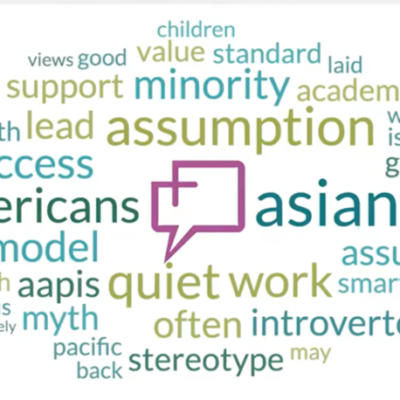The following was written by Dr. Leena Bakshi McLean, founder of STEM4Real, a nonprofit professional learning organization.
As administrators, school culture is an important facet we have to consider. In lieu of current events, especially as a result of the Black Lives Matter movement, racism is a major concern for many students, parents and community members. Racism is prejudice, discrimination or antagonism by an individual, community or institution against a person or people based on the racial or ethnic group. Based on this definition, you would think racism would be easy to identify in our school or district, but the truth is, racism is often inconspicuous and embedded everywhere in our educational system. There is no such thing as “neutral” and a point of view in education is supporting one group of people over another. Pointing out racism often takes a brave individual. It is important to point out “brave” in this context because pulling the racism “card” is difficult and might require a lot of inner conflict because the trend in the past has been to turn a blind eye and ignore the situation.
So, as the leaders in our school and district, what can we do to address racism? Are we willing to do the work and stand up for justice? Or are we going to sit down in compliance? At STEM4Real, we ask ourselves a question posed by Principal Baruti Kafele, “Are your students better off because of you?”
We have created a framework to guide educators in building anti-racist learning cultures in their own context. Our Leadership 4 Justice framework of RECOGNIZE, DISMANTLE and REBUILD can help you get started (or continue) in your journey to establish socially just, equitable and anti-racist learning environments for every student.
RECOGNIZE
The first step to recognizing racism is examining equitable opportunities for all students, especially when it comes to our vulnerable student populations (i.e. students of color, students in special education and students from foster homes or are homeless). For example: Who is in your honors or advanced classes? Who is getting suspended? What is the makeup of your leadership team; do you see a team that is reflective of your community’s racial or ethnic groups?
You can also use our STEM4Real Odometer to reflect on equity in your classrooms, schools and districts. Our odometer helps indicate your “speed” of equity knowing that the road to anti-racism is a journey and we are all going at our own speed. The odometer looks at components of equity in terms of availability of advanced courses, social emotional learning, discipline, leadership, strength of family/home partnerships, and the joy of teachers in supporting students.
DISMANTLE
After you’ve recognized inequitable situations, it is time to dismantle the systems leading to those so you can create more equitable outcomes. Consider picking one of these factors to focus on:
-
Diversifying Your Educator Force: While you cannot hire based on a person’s race or ethnicity as a qualification, consider tapping into teachers of color to take on leadership roles and give them opportunities to provide their insight.
-
Revising and Revisiting School Policies & Procedures: Evaluate whether or not procedures that take students out of learning are the most helpful responses to behavior issues and explore alternatives. Seek out assistance from guidance counselors in incorporating restorative justice to reflect on misbehavior.
-
Ensuring Well-Rounded Instruction: Assessment scores have us hyper focusing on math and ELA (which are important subjects) but it comes at the cost of us neglecting or removing instruction in science, music and the arts. Work with educators to use an interdisciplinary approach to increase math and ELA skills that doesn’t require sacrificing access to other subjects.
Throughout this process, remember that dismantling broken systems does not necessarily mean we have to “burn down the house.” Keep a curious outlook and ask questions about situations that don’t feel right when it comes to serving your students. We became administrators and leaders because of our years of experience and our gut instinct can often be a telltale sign that something is not right.
REBUILD
The last step is to rebuild an anti-racist environment where every person feels a sense of belonging. Amplify what is working and make changes where you see that equity is lacking or needs improvement. In order to rebuild, you need a team of visionaries that share your vision grounded in equity. Make sure to include educators of color on your team and check in with student groups like ELLs, Black, LatinX, Special Education and LGTBQ, just to name a few.
There is no time better than the present to create anti-racist schools and districts. The COVID-19 pandemic shed light on inequitable situations with our vulnerable student groups, with opportunity gaps continuing to widen. For example, in the state of California, Black or African American students scored nearly half of the state average on the California Science Test in 2022 at 13.71% compared to 29.45%. We see this trend across other states in the country like Hawai’i, Maryland and Virginia.
This work takes work. It is up to us as leaders if we are willing to stand up in justice or sit down in compliance. Our students are depending on us as leaders to ensure that their learning environment values, respects and sees their cultures, heritage and lived experiences as equally important. “Racist” is not a fixed term and we as leaders can choose to have open eyes, minds and hearts to be anti-racist. According to Dr. Ibram X. Kendi in an interview, “I would say the most efficient way we can do this is by making sure we ourselves are striving to be antiracist. Because if we as individuals are really ensuring that we are being antiracist as individuals, then that’s going to come across in how we act as an educator.”








Leave a Comment